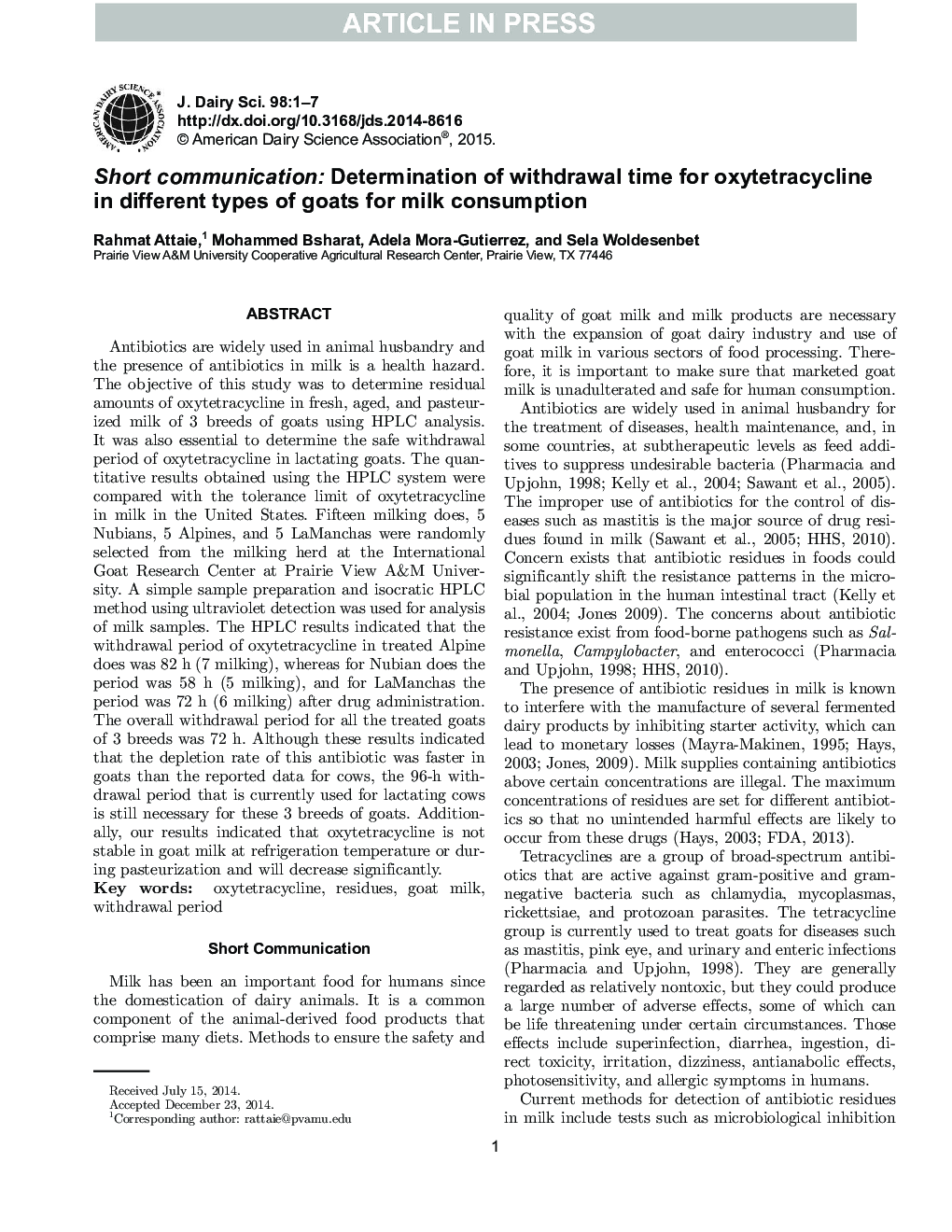| Article ID | Journal | Published Year | Pages | File Type |
|---|---|---|---|---|
| 10975238 | Journal of Dairy Science | 2015 | 7 Pages |
Abstract
Antibiotics are widely used in animal husbandry and the presence of antibiotics in milk is a health hazard. The objective of this study was to determine residual amounts of oxytetracycline in fresh, aged, and pasteurized milk of 3 breeds of goats using HPLC analysis. It was also essential to determine the safe withdrawal period of oxytetracycline in lactating goats. The quantitative results obtained using the HPLC system were compared with the tolerance limit of oxytetracycline in milk in the United States. Fifteen milking does, 5 Nubians, 5 Alpines, and 5 LaManchas were randomly selected from the milking herd at the International Goat Research Center at Prairie View A&M University. A simple sample preparation and isocratic HPLC method using ultraviolet detection was used for analysis of milk samples. The HPLC results indicated that the withdrawal period of oxytetracycline in treated Alpine does was 82Â h (7 milking), whereas for Nubian does the period was 58Â h (5 milking), and for LaManchas the period was 72Â h (6 milking) after drug administration. The overall withdrawal period for all the treated goats of 3 breeds was 72Â h. Although these results indicated that the depletion rate of this antibiotic was faster in goats than the reported data for cows, the 96-h withdrawal period that is currently used for lactating cows is still necessary for these 3 breeds of goats. Additionally, our results indicated that oxytetracycline is not stable in goat milk at refrigeration temperature or during pasteurization and will decrease significantly.
Related Topics
Life Sciences
Agricultural and Biological Sciences
Animal Science and Zoology
Authors
Rahmat Attaie, Mohammed Bsharat, Adela Mora-Gutierrez, Sela Woldesenbet,
